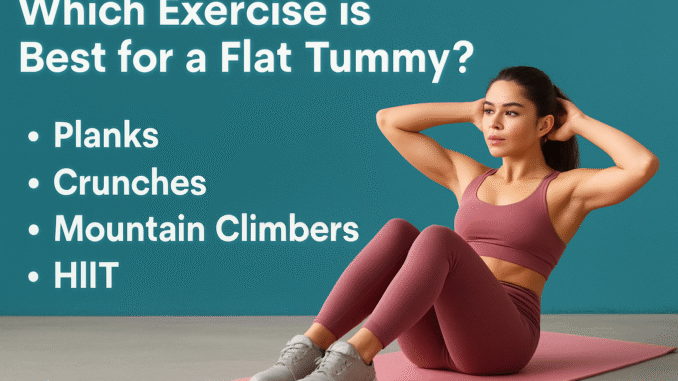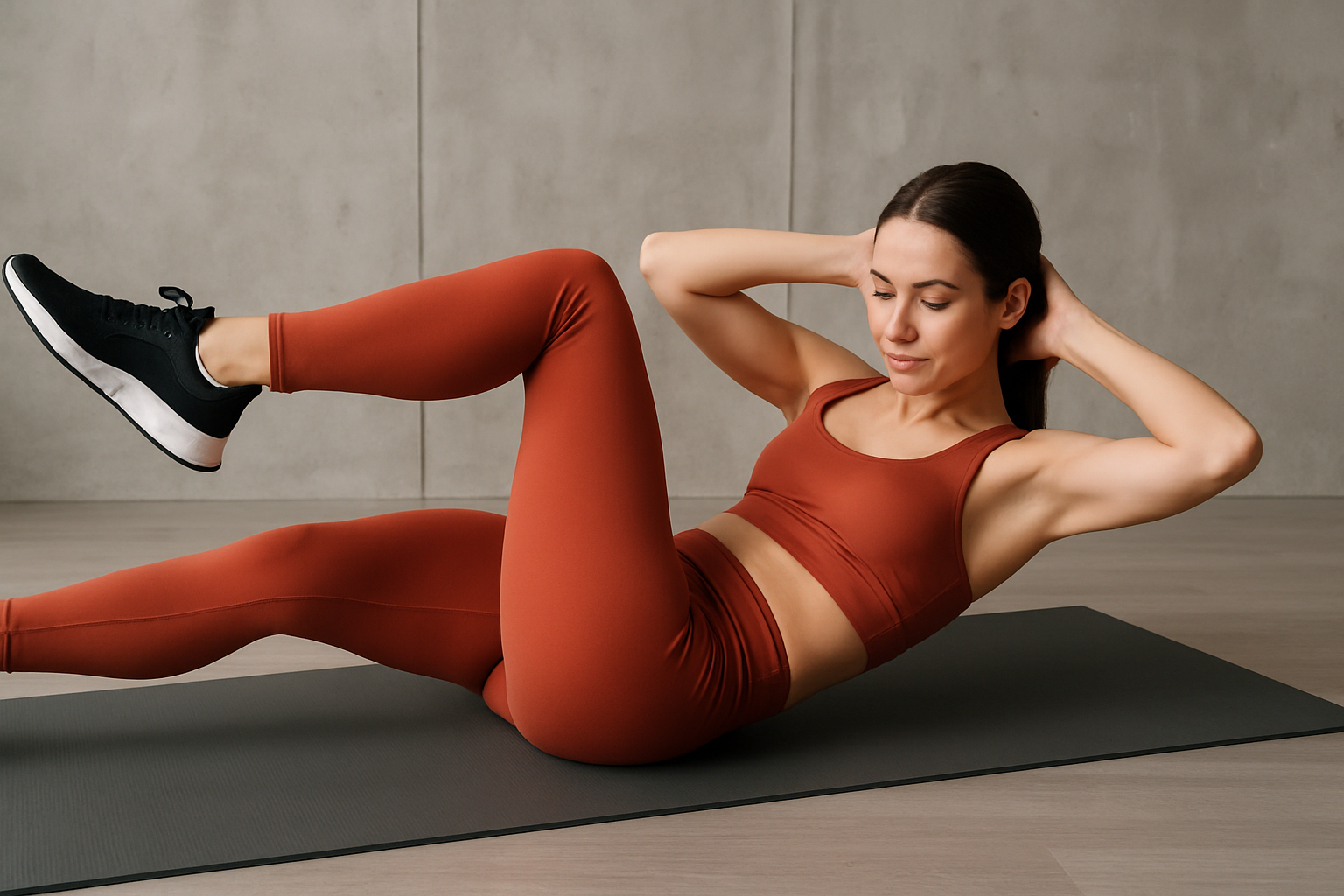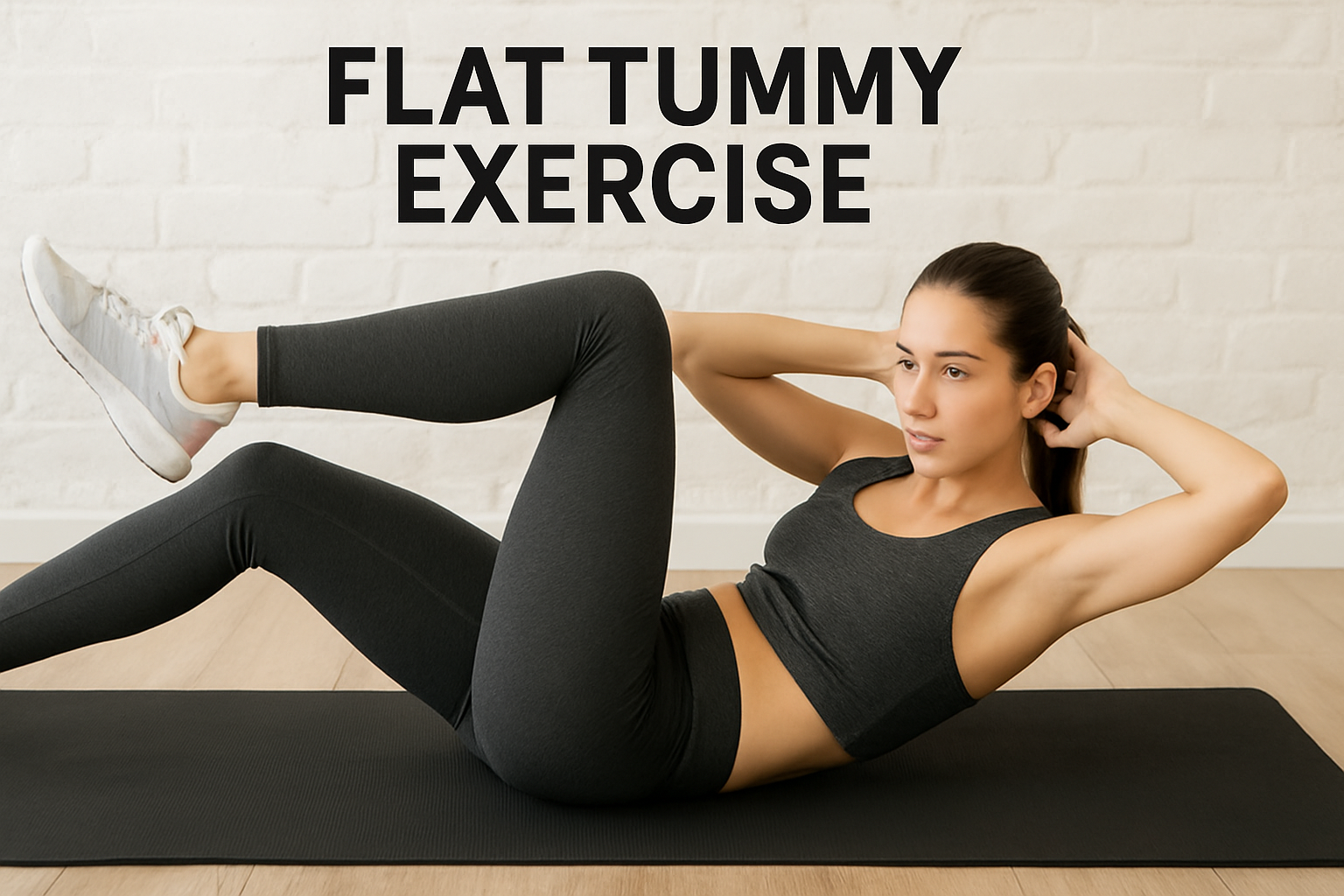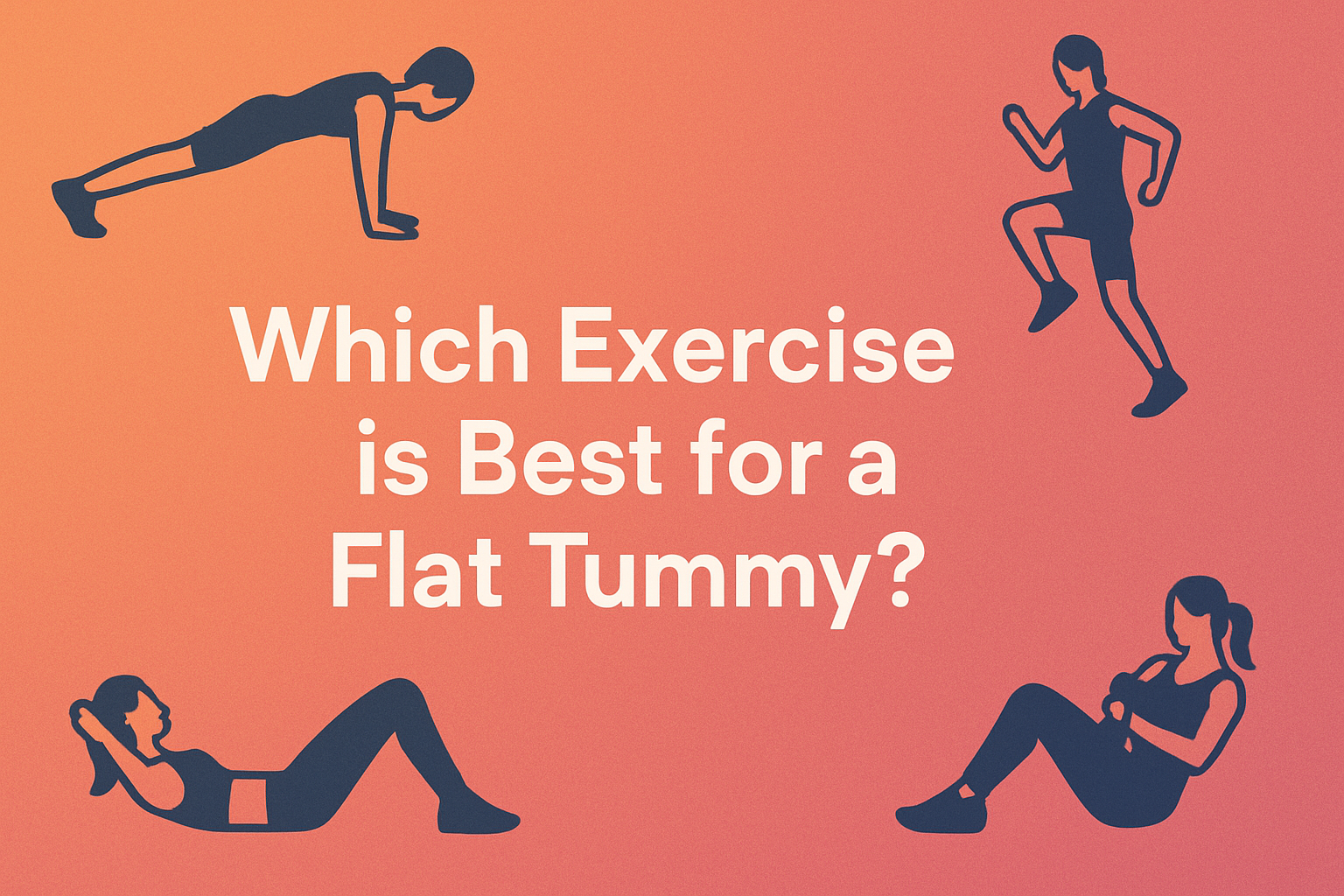
Look, I get it. You’ve probably scrolled through countless Instagram fitness posts promising “one weird trick” for instant abs, bought those sketchy waist trainers that made you feel like you couldn’t breathe, and maybe even tried those ridiculous 5-minute ab routines that left you sore but with zero visible results. Been there, done that, got the t-shirt (that still didn’t fit quite right around the middle).
Here’s what I wish someone had told me years ago: getting a genuinely flat stomach isn’t about finding some secret exercise or following the latest fad. It’s about understanding how your body actually works and then being smart about combining the right movements with the right fuel. We’re talking about a mix of exercises that target your core from every angle, get your heart pumping to burn fat, and build overall strength. Think planks that actually challenge you, mountain climbers that leave you breathless, strategic ab work, and high-intensity sessions that torch calories both during and after your workout.
But here’s the kicker and this is where most people get tripped up your kitchen habits are going to make or break everything. You can plank until you’re blue in the face, but if you’re still stress-eating pizza at 11 PM or downing sugary lattes every morning, those abs are going to stay hidden under a layer of stubborn fat. The good news? Once you crack the code on pairing effective exercises with eating habits that actually support your goals, things start clicking into place faster than you’d expect.
The Uncomfortable Truth About Belly Fat

Before we jump into the fun stuff the workouts that actually deliver results we need to have a brutally honest conversation about what’s really going on with that midsection. Your belly fat isn’t just one big blob of annoyance. It’s actually two completely different types that your body treats in totally different ways.
First up is subcutaneous fat. This is the squishy stuff you can pinch between your fingers when you’re having one of those “ugh, I feel bloated” moments in front of the mirror. Your body stores this fat right under your skin, and while it can be stubborn to lose, it’s not wreaking havoc on your internal organs.
Then there’s visceral fat, and this is the one that keeps doctors up at night. This fat wraps around your liver, pancreas, and other vital organs like some kind of unwanted blanket. You can’t see it or grab it, but it’s actively releasing inflammatory compounds into your bloodstream and significantly increasing your risk of heart disease, diabetes, and a whole host of other health issues.
So why does your body seem to love storing fat right around your middle? Well, it’s not personal it’s evolutionary. Your midsection is prime real estate for fat storage because it’s close to your vital organs, making it easy for your body to access that energy when needed. Problem is, in our modern world of endless snacks and sedentary jobs, that “emergency” energy rarely gets used.
Your diet plays a huge role here. Every time you eat something loaded with refined sugars or processed junk, your blood sugar spikes, insulin floods your system, and your body gets the message to store fat especially around your waistline. Add in chronic stress (hello, modern life), and you’re dealing with constantly elevated cortisol levels, which basically tells your body, “Hey, we might need to survive a famine, so let’s pack some extra padding around the middle just in case.”
Sleep deprivation makes everything worse. When you’re running on four hours of sleep and three cups of coffee, your hunger hormones go completely haywire. You start craving high-calorie, high-carb foods, and your body becomes incredibly efficient at storing whatever you eat as fat.
Why Your 500-Sit-Up Strategy Isn’t Working
Let me save you years of frustration by explaining why doing endless crunches won’t magically reveal your abs. The fitness industry has been selling us this lie for decades, and it’s time to put it to rest once and for all.
Spot reduction the idea that you can target fat loss in specific areas by working those muscles is about as real as unicorns. When you do 200 crunches, you’re definitely strengthening the muscles underneath the fat layer, which is great for core stability and functional strength. But that fat sitting on top of your muscles? It’s not going anywhere until your overall body fat percentage drops.
Your body burns fat systematically, usually starting from your extremities and working inward. For most people, belly fat is literally the last to go, which is why it feels so incredibly stubborn. It’s like your body is saying, “Nope, we’re keeping this emergency energy store right here where we can access it easily.”
The only way to reveal those abs you’re building is by creating a caloric deficit through a combination of smart exercise and nutrition choices that boost your metabolism and encourage fat burning throughout your entire body. This means full-body movements, compound exercises, and cardio that gets your heart rate up and keeps it there.
The Exercises That Actually Move the Needle
After years of trying everything from P90X to Pilates to those weird ab wheels that collect dust in people’s closets, I’ve figured out which exercises consistently deliver results. These aren’t the flashiest moves you’ll see on social media, but they’re the ones that work when you do them consistently.
Planks: Your Core’s Best Friend

If I could only recommend one exercise for the rest of my life, it would be the plank. This exercise is like a full-body tune-up disguised as an ab move. When done correctly, you’re not just working your rectus abdominis (the six-pack muscles everyone obsesses over). You’re engaging your transverse abdominis, which acts like a natural weight belt around your spine, your internal and external obliques that create that coveted V-shape, and even muscles in your shoulders, glutes, and legs.
Here’s how to do a plank that actually challenges you: Start in a push-up position, then lower down to your forearms. Your elbows should be directly under your shoulders not in front, not behind. No sagging hips, no pike position that makes it easier.
The magic happens when you focus on actively engaging every muscle. Squeeze your glutes, pull your belly button toward your spine, and breathe steadily. Start with whatever time you can handle even 15 seconds is better than nothing and gradually work up to holding it for a full minute or more.
Side planks deserve their own mention because they target those obliques that create definition along the sides of your waist. Lie on your side, prop yourself up on one forearm, and stack your feet. Keep your body in a straight line and resist the urge to let your hips sag toward the ground.
Mountain Climbers: Cardio That Doubles as Core Work
Mountain climbers are basically the lovechild of cardio and core training, and they’re incredibly effective for burning calories while strengthening your midsection. Start in that same plank position with your hands flat on the ground. Now, drive one knee toward your chest, then quickly switch legs, maintaining that plank position the entire time.
The key is keeping your core engaged throughout the entire movement. It’s easy to let your form fall apart as you get tired, but that’s when injuries happen and effectiveness plummets. Start slow and focus on control before you worry about speed.
Strategic Ab Work That Actually Works
Traditional crunches get a bad rap, but when done correctly as part of a comprehensive program, they can be incredibly effective. The problem is most people rush through hundreds of sloppy repetitions instead of focusing on quality movement.
Lightly place your hands behind your head for support they’re not there to yank your neck forward. Engage your core and slowly lift your shoulder blades off the ground, focusing on the connection between your ribcage and pelvis. Hold for a second.
For variety and to hit different areas of your core, try bicycle crunches where you bring opposite elbow to knee, reverse crunches where you lift your hips off the ground, or dead bugs where you extend opposite arm and leg while lying on your back.
High-Intensity Intervals: Your Fat-Burning Secret Weapon
HIIT workouts are like getting a week’s worth of results in a single session. These workouts alternate between periods of all-out effort and brief recovery, creating what exercise physiologists call EPOC excess post-exercise oxygen consumption. Basically, your metabolism stays elevated for hours after your workout ends, continuing to burn calories even while you’re sitting on the couch.
A simple but effective HIIT routine might look like 30 seconds of burpees (yes, they’re terrible, but they work), followed by 30 seconds of rest, then 30 seconds of jumping jacks, another rest period, and so on. The intense intervals should feel genuinely challenging you should be breathing hard and definitely not able to carry on a conversation.
Your Weekly Action Plan
Having a structured routine takes all the guesswork out of your fitness journey. Here’s a realistic weekly schedule that balances challenging workouts with adequate recovery:
Monday: Kick off the week with energy by combining a HIIT session with plank variations and leg raises. This sets a positive, active tone for the entire week.
Tuesday: Give your body a break from high intensity with a longer walk or easy bike ride, followed by rotational core exercises like Russian twists.
Wednesday: Complete rest day or gentle yoga. This isn’t lazy this is smart. Your muscles actually grow and strengthen during recovery periods, not during the workouts themselves.
Thursday: Another HIIT session combined with mountain climbers and various crunch variations to challenge your core from different angles.
Friday: Focus on strength training with compound movements like squats, deadlifts, and push-ups, finishing with challenging side planks.
Saturday: Enjoy a longer, more leisurely cardio session maybe a hike, swim, or dance class followed by a comprehensive core circuit.
Sunday: Complete rest or gentle stretching and meditation to mentally and physically prepare for the week ahead.
The Food Factor: Why Your Kitchen Matters More Than Your Gym
Here’s the truth bomb nobody wants to hear: you absolutely cannot out-exercise a poor diet. I’ve watched people religiously follow workout programs for months, sweating through every session, only to see minimal results because they completely ignored what they were putting in their mouths.
The often-quoted “abs are made in the kitchen” isn’t just a catchy saying it’s backed by science. Weight loss and fat burning happen when you consistently consume fewer calories than you burn, and it’s much easier to avoid eating 500 calories than it is to burn them off through exercise.
Focus on foods that actually nourish your body rather than just filling it up. Lean proteins like chicken, fish, eggs, and legumes help preserve muscle mass while keeping you satisfied for hours. Vegetables should dominate your plate they’re packed with fiber that aids digestion, helps you feel full, and provides essential micronutrients your body needs to function optimally.
Choose complex carbohydrates like quinoa, brown rice, and sweet potatoes that provide steady energy without the blood sugar roller coaster that promotes fat storage. Include healthy fats from sources like avocados, nuts, and olive oil your body needs these for hormone production and to absorb fat-soluble vitamins.
Don’t underestimate the power of proper hydration. Drinking enough water helps with digestion, reduces bloating, and can even slightly boost your metabolism. Aim for at least half your body weight in ounces daily, and more if you’re active or live in a hot climate.
The Lifestyle Elements That Make Everything Click

Your daily habits outside of formal exercise sessions have a massive impact on your results. Quality sleep is non-negotiable—when you’re chronically sleep-deprived, your body produces more hunger hormones and fewer satiety hormones, making you crave high-calorie foods and store fat more efficiently.
Stress management deserves equal attention. Chronic stress keeps cortisol levels elevated, which directly promotes fat storage around your midsection. Find what works for you whether it’s meditation, journaling, time in nature, or regular phone calls with friends who make you laugh.
Your posture throughout the day affects both how your core functions and how your stomach appears. Slouching weakens your deep stabilizing muscles and pushes your belly forward. Practice standing and sitting tall with your shoulders back and core gently engaged.
Keeping Your Expectations Real and Your Motivation High
Let’s talk timelines because this is where most people get discouraged and give up. You might start feeling stronger and more energetic within the first week or two, which is incredible and worth celebrating. However, visible changes in your midsection typically take 4-8 weeks of consistent effort to become apparent.
Your starting point, genetics, how closely you stick to the program, and your overall lifestyle all influence how quickly you see results. Some people notice changes in how their clothes fit before they see differences in the mirror, while others see definition appear gradually over several weeks.
Track your progress through multiple measures, not just visual changes. Take waist measurements, notice improvements in how long you can hold a plank, and pay attention to how you feel throughout the day. Progress photos can be incredibly motivating sometimes changes are more obvious in pictures than in daily mirror checks.
Remember that temporary setbacks don’t erase your progress. Life gets busy, motivation fluctuates, and sometimes you’ll have weeks where you don’t stick to your routine perfectly. The key is getting back on track quickly rather than using one bad week as an excuse to abandon your goals entirely.
Making It All Come Together
Getting a flat stomach isn’t about achieving perfection or following some complicated system. It’s about consistently making choices that support your goals and being patient with the process. The exercises I’ve shared work but only if you actually do them regularly and support them with nutrition choices that fuel your body rather than fighting against it.
Start with where you are right now, not where you think you should be. Use whatever time and resources you have available, and focus on building sustainable habits rather than dramatic short-term changes. Your future self the one with more energy, confidence, and strength is counting on the decisions you make today.
Leave a Reply